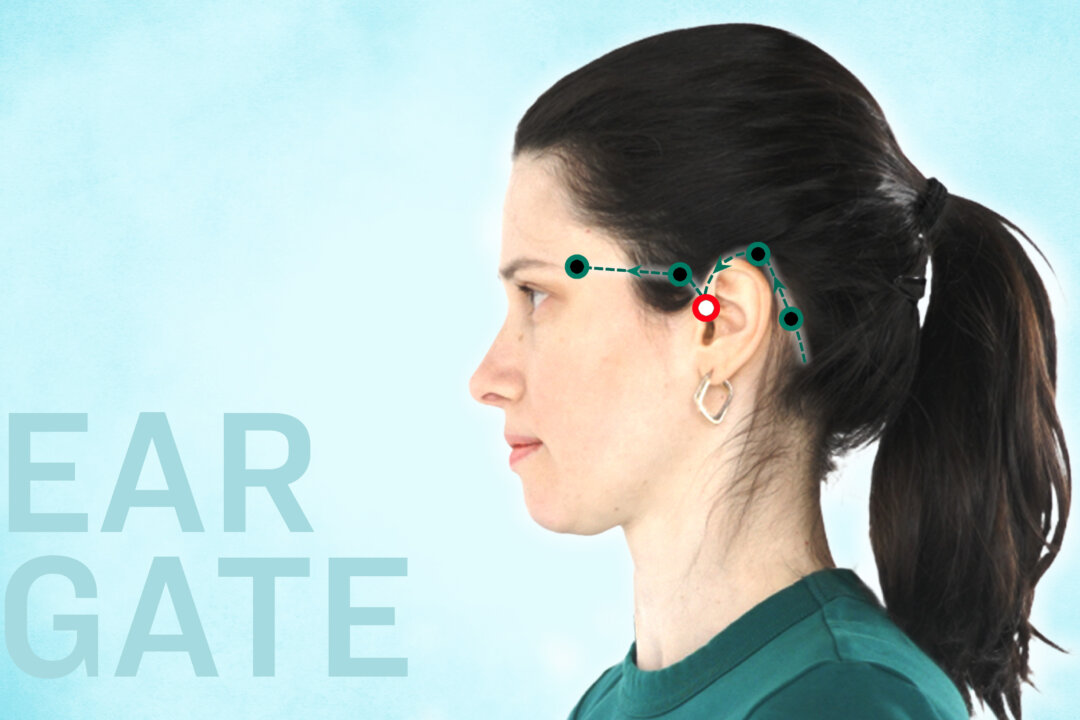You have probably heard the term “ultra-processed food.” What does that mean? Unprocessed food probably requires little explanation. For example, a whole raw apple that has not been cut, cooked or otherwise prepared would be unprocessed.
From there, a range of processing might be done – the apple could be cut in slices and packaged for snacking – that would be some degree of processing. It could be mixed with sugar and lemon juice and cooked down to make apple butter. That would be more processing.

It could also be mixed with numerous other ingredients, including artificial colors, sweeteners, hydrogenated oils, starches, enriched flours, and preservatives to make shelf-stable snack cakes. That would be an ultra-processed food. Ultra-processed foods provide convenience and help reduce the cost of foods by providing longer shelf life.
Many of the current staples of American life are ultra-processed foods – think about chips, crackers, frozen meals, soft drinks, many breakfast cereals, processed meats (like hot dogs), candies, ice cream, and some common fast foods. Certain ingredients used in ultra-processed foods have been associated with health problems such as cancer, cardiovascular disease, diabetes, mental / behavioral conditions, and obesity. The FDA has authorized the use of ingredients found in ultra-processed foods available in the United States.
However, certain countries, including those within the European Union, have prohibited the inclusion of these ingredients in their food supplies. On January 15, 2025, the FDA banned Red Dye number 3 from food after research linked the dye to higher rates of thyroid cancer in animals, but not humans. While the FDA has not banned many ingredients prohibited in other countries , states have been taking independent action.
California leads the nation in regulating food ingredients. In 2023, California passed legislation banning Red Dye number 3, propylparaben (a preservative to prevent the growth of mold and bacteria), potassium bromate (used to make bread rise better and to improve the texture), and brominated vegetable oil (used to stabilize citrus flavorings in drinks). Other states have also begun to take action.
Below is a chart outlining recent and pending state legislation aimed at food regulation. Referred to Senate Public Health Welfare And Labor If passed, effective 1/1/2028 Pending before the Senate Health & Social Services Committee If passed, effective 1/15/2027 Pending in the Appropriations Committee on Agriculture, Environment, and General Government Effective 1/1/2028 if passed Pending before the Senate Education Committee Effective 7/1/2025 if passed Pending before the Senate If passed, effective 1/1/2027 Referred to Public Health Committee If passed, effective 7/1/2025 Prohibits from food in public schools: Blue dye number 1 Blue dye number 2 Green dye number 3 Red dye number 3 Red dye number 40 Yellow dye number 5 Yellow dye number 6 Azodicarbonamide Butylated hydroxyanisole (BHA) Butylated hydroxytoluene (BHT) Potassium bromate Propylparaben Titanium dioxide Requires warnings on foods containing: Acesulfame potassium. Acetylated esters of mono- and diglycerides (acetic acid ester) Activated charcoal Anisole Atrazine Azodicarbonamide (ADA) Butylated hydroxyanisole (BHA) Butylated hydroxytoluene (BHT) Bleached flour.
Blue dye number 1 Blue dye number 2 Bromated flour Calcium bromate Canthaxanthin Carrageenan Certified food colors FDA Citrus red dye 2 Diacetyl Diacetyl tartaric and fatty acid esters of mono- and diglycerides (DATEM) Dimethylamylamine (DMAA). Dioctyl sodium sulfosuccinate (DSS) Ficin Green dye number 3 Interesterified palm oil Interesterified soybean oil Lactylated fatty acid esters of glycerol and propylene glycol Lye Melatonin Morpholine Olestra Partially hydrogenated oil (PHO) Potassium aluminum sulfate Potassium bromate Potassium iodate Potassium sorbate Propylene oxide Propylparaben Red dye number 3 Red dye number 4 Red dye number 40 Sodium aluminum sulfate Sodium lauryl sulfate Sodium stearyl fumarate Stearyl tartrate Synthetic or artificial vanillin Synthetic trans fatty acid Thiodipropionic acid Titanium dioxide Toluene. Yellow dye 5 Yellow dye number 6 Restaurants using must disclose to customers the use of the following seed oils: Canola or rapeseed oil Corn oil Cottonseed oil Flaxseed oil Grapeseed oil Rice bran oil Safflower oil Soybean oil Sunflower oil Pending before the Senate Health & Welfare Committee If passed, effective for the 2026-2027 school year If passed, effective 1/1/2027 If passed, effective 1/1/2027 Requires warning labels for foods containing: Acrylamide Arsenic Bisphenol A (BPA) Blue dye number 1 Cadmium Di(2-ethylhexyl)phthalate (DEHP) Lead Mercury Red dye number 40 Yellow dye number 5 Yellow dye number 6 Prohibits in foods in public schools: Potassium bromate Propylparaben Titanium dioxide Brominated vegetable oil Yellow dye number 5 Yellow dye number 6 Blue dye number 1 Blue dye number 2 Green dye number 3 Red dye number 3 Red dye number 40 Pending before the House If passed, effective 2026-2027 school year Banned from foods: Red dye number 3 Potassium bromate Propylparaben Banned from foods sold in public schools: Red dye number 3 Red dye number 40 Blue dye number 1 Blue dye number 2 Green dye number 3 Yellow dye number 5 Yellow dye number 6 Pending before the NY Senate Effective 1 year after passage (with an up to 3 year exception based upon a product’s best by date) Banned from foods and drugs Blue dye number 1 Blue dye number 2 Green dye number 3 Red dye number 3 Red dye number 40 Yellow dye number 5 Yellow dye number 6.
If the FDA revokes is authorization of use, the following would also be banned: Aspartame; Azodicarbonamide (ADA) Brominated vegetable oil Butylated hydroxyanisole (BHA) Butylated hydroxytoluene (BHT) Ethylene dichloride Methylene chloride Potassium bromate; Propyl gallate; Propylparaben; Sodium benzoate; Sodium nitrate; If signed by the governor, ban in foods effective on 1/15/2027 and in drugs on 1/18/2028 Warnings would also be required for the enumerated ingredients. Prohibits from foods in schools: Red dye number 3 Potassium bromate Propylparaben Also limits fats, sugars, calories and caffeine in some snacks and drinks available for students Prohibits in foods in schools: Blue dye number 1 Blue dye number 2 Green dye number 3 Red dye number 40 Yellow dye number 5 Yellow dye number 6 And any additive that is substantially similar to any of the above Also prohibits in foods in schools: Red dye number 3 Red dye number 40 Yellow dye number 5 Yellow dye number 6 Blue dye number 1 Blue dye number 2 Green dye number 3 caramel Prohibits from food in schools and foods available through supplemental nutrition programs: Red dye number 3 Red dye number 40 Yellow dye number 5 Yellow dye number 6 Blue dye number 1 Blue dye number 2 Green dye number 3 Citrus red dye number 2 Orange B dye Prohibits in foods: aspartame artificial flavoring propylparaben azodicarbonamide (ADA butylated hydroxyanisole (BHA) Butylated hydroxytoluene (BHT) color additive dimethylpolysiloxane (PDMS) monosodium glutamate (MSG) Tert-butylhydroquinone (TBHQ) Partially hydrogenated oils Sodium benzoate Sodium nitrate Sodium nitrite methylparaben Prohibits is foods available under SNAP programs: brominated vegetable oil (BVO) potassium bromate propylparaben azodicarbonamide Butylated hydroxyanisole (BHA) Red dye number 3 Titanium dioxide. Prohibits from foods in schools: brominated vegetable oil (BVO potassium bromate propylparaben azodicarbonamide butylated hydroxyanisole (BHA titanium dioxide red dye 3 blue 1 blue 2 green 3 red 40 yellow 5 yellow 6 Effective immediately upon passage if it receives a 2/3 vote.
If passed with less than a 2/3 vote, effective 9/1/2025 Effective immediately upon passage if it receives a 2/3 vote. If passed with less than a 2/3 vote, effective 9/1/2025 If passed, effective 9/1/2025 Effective immediately upon passage if it receives a 2/3 vote. If passed with less than a 2/3 vote, effective 9/1/2025 Effective immediately upon passage if it receives a 2/3 vote.
If passed with less than a 2/3 vote, effective 9/1/2025 Stay tuned for more regulatory changes. With nationwide distribution common among food manufacturers, an ingredient ban in one state can effectively function as a nationwide ban. Plus, with the new administration in Washington, D.
C., it is anticipated that the FDA will impose additional regulations on food ingredients. Bottom line, regulations at the state and federal levels may lead manufacturers to reformulate or discontinue some foods.
.
The Changing Food Regulatory Landscape

You have probably heard the term “ultra-processed food.” What does that mean? Unprocessed food probably requires little explanation. For example, a whole raw apple that has not been cut, cooked or otherwise prepared would be unprocessed. From there, a range of processing might be done – the apple could be cut in slices and packaged for snacking – that would be some degree of processing. It could be mixed with sugar and lemon juice and cooked down to make apple butter. That would be more processing. It could also be mixed with numerous other ingredients, including artificial colors, sweeteners, hydrogenated oils, starches, enriched flours, and preservatives to make shelf-stable snack cakes. That would be an ultra-processed food. Ultra-processed foods provide convenience and help reduce the cost of foods by providing longer shelf life. Many of the current staples of American life are ultra-processed foods – think about chips, crackers, frozen meals, soft drinks, many breakfast cereals,... Read the complete article here...Copyright © 2025 Womble Bond Dickinson (US) LLP All Rights Reserved.















